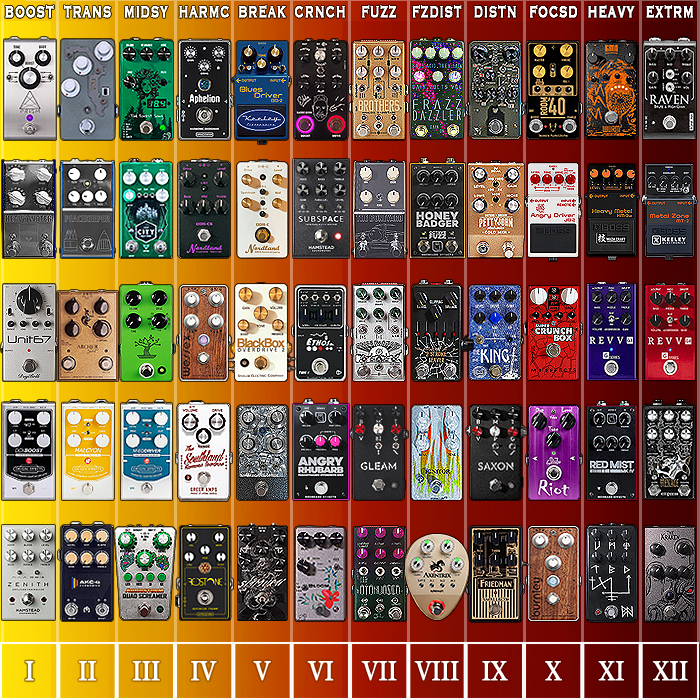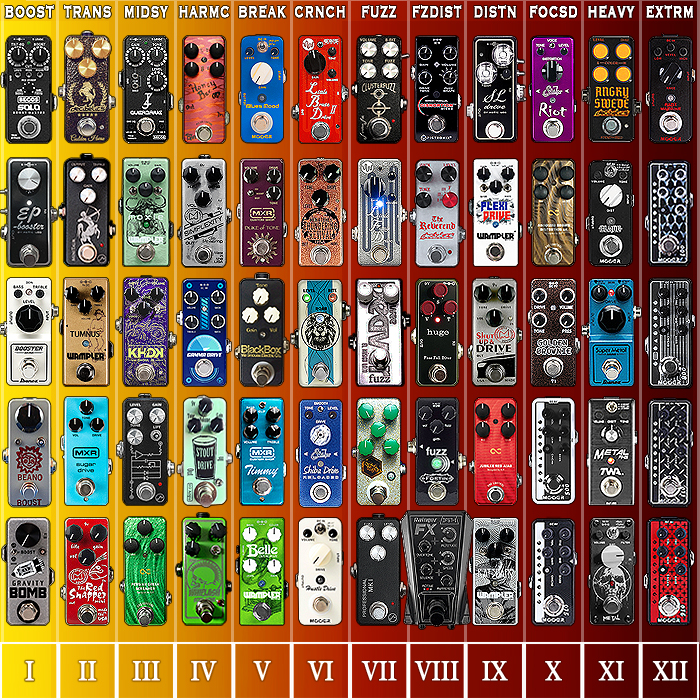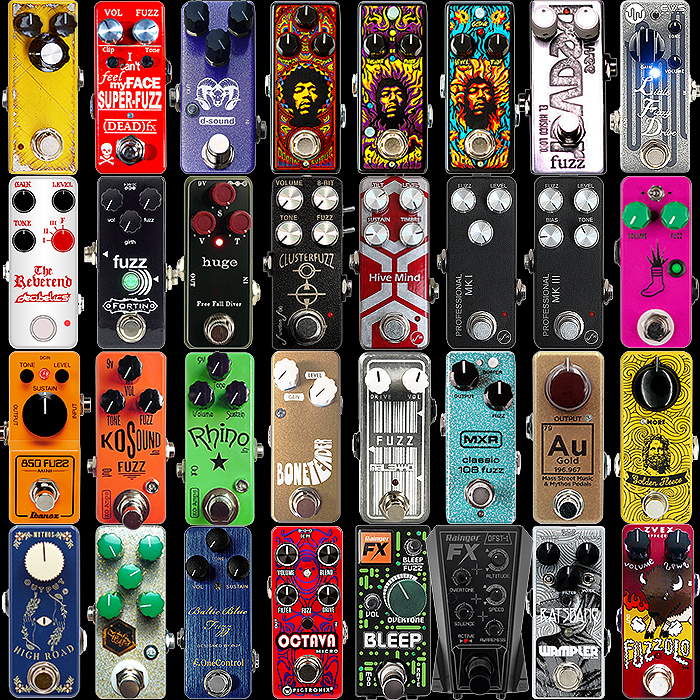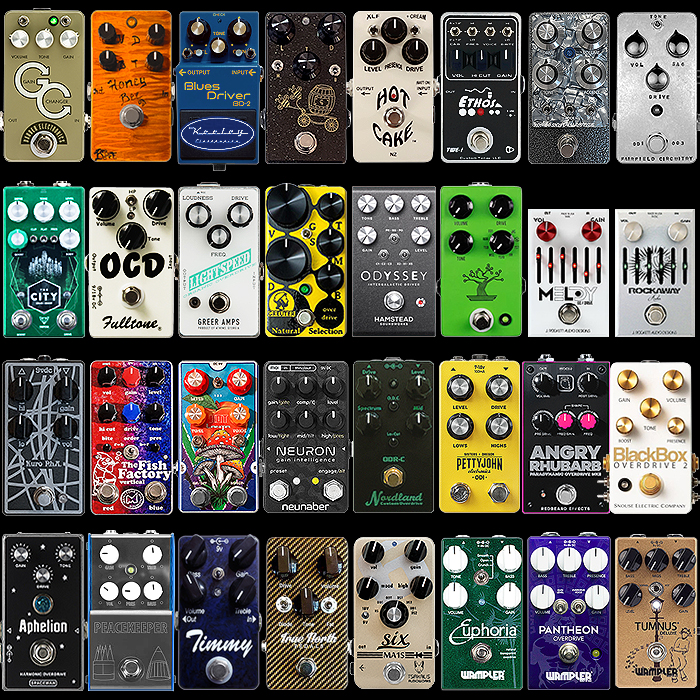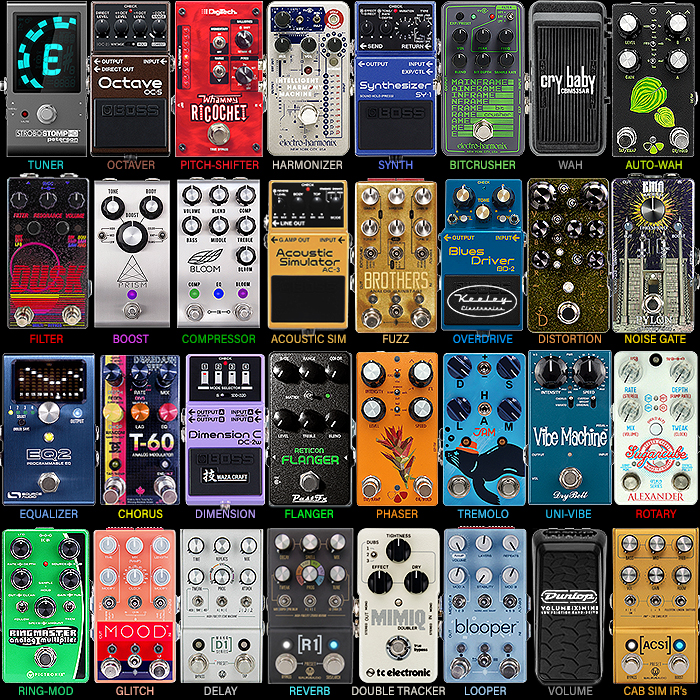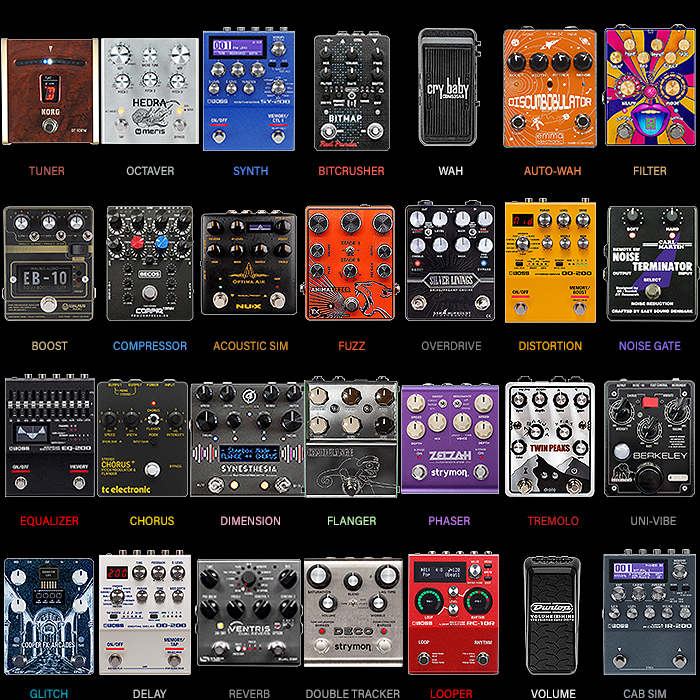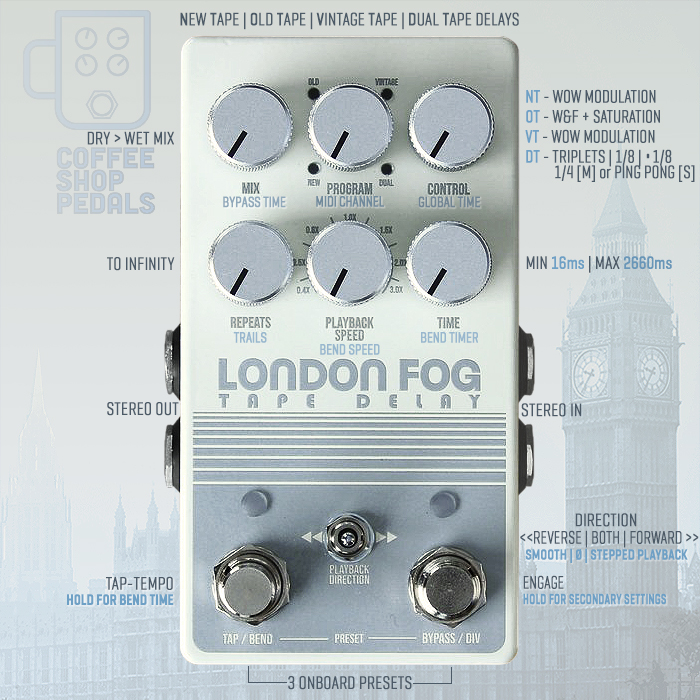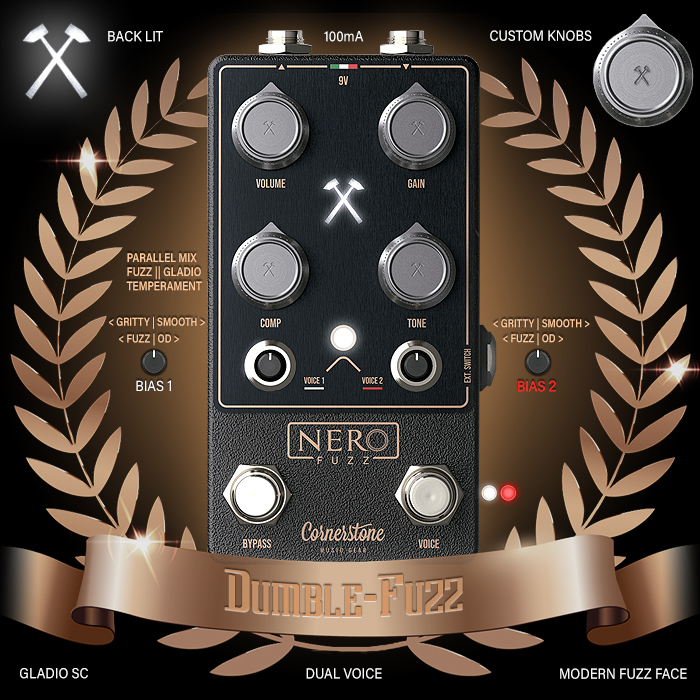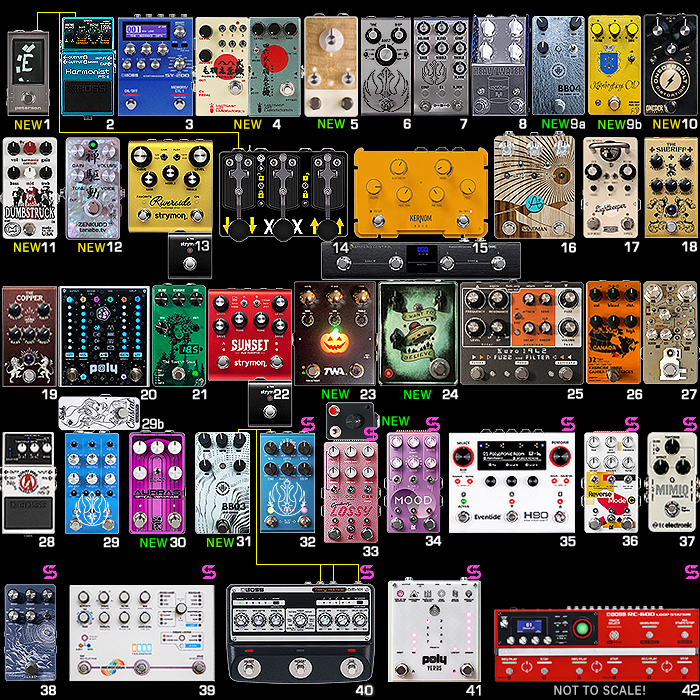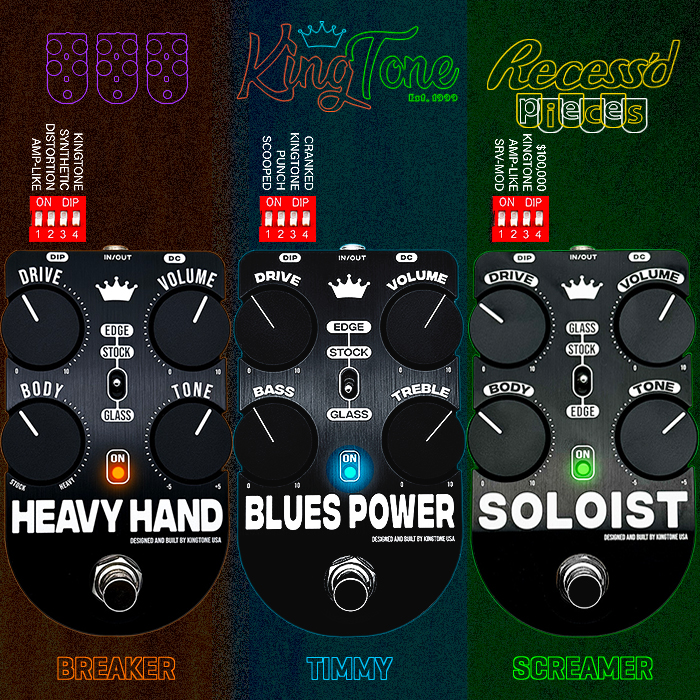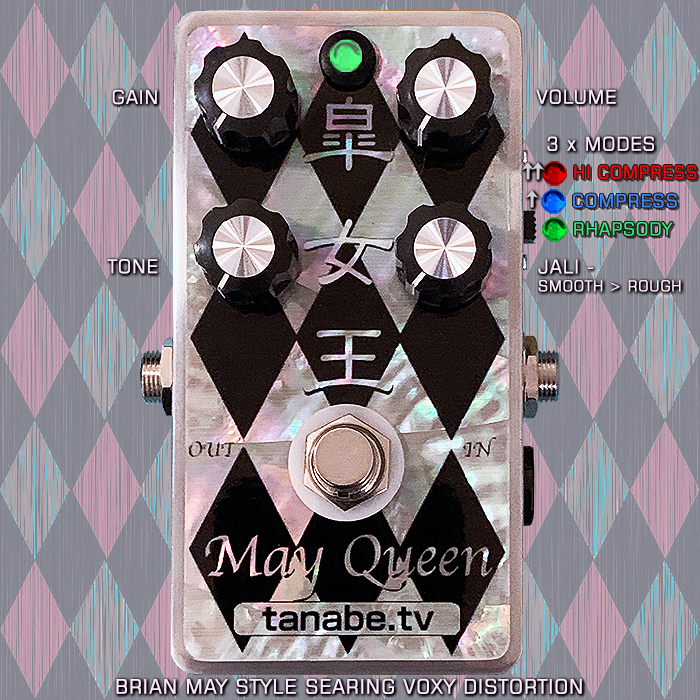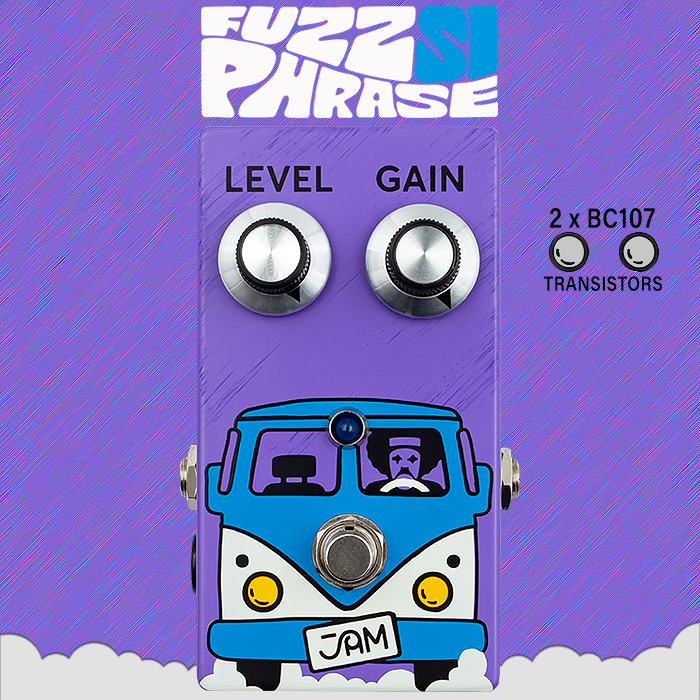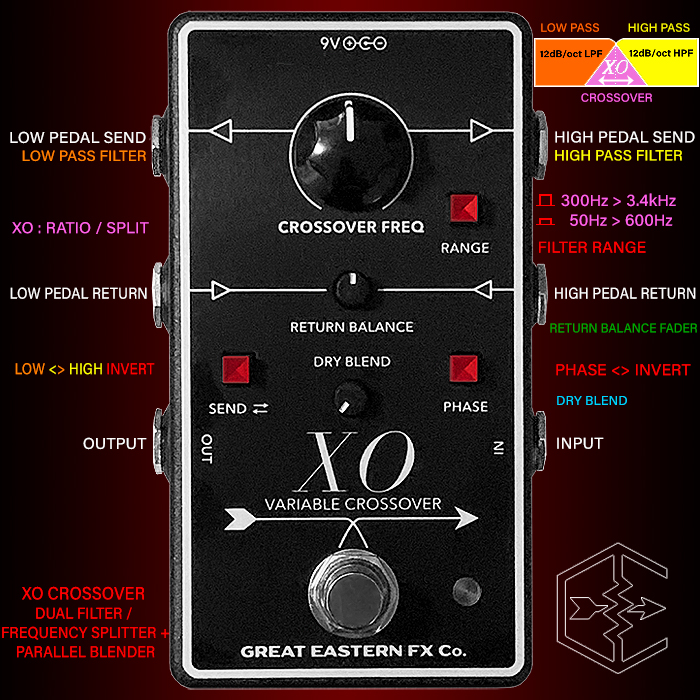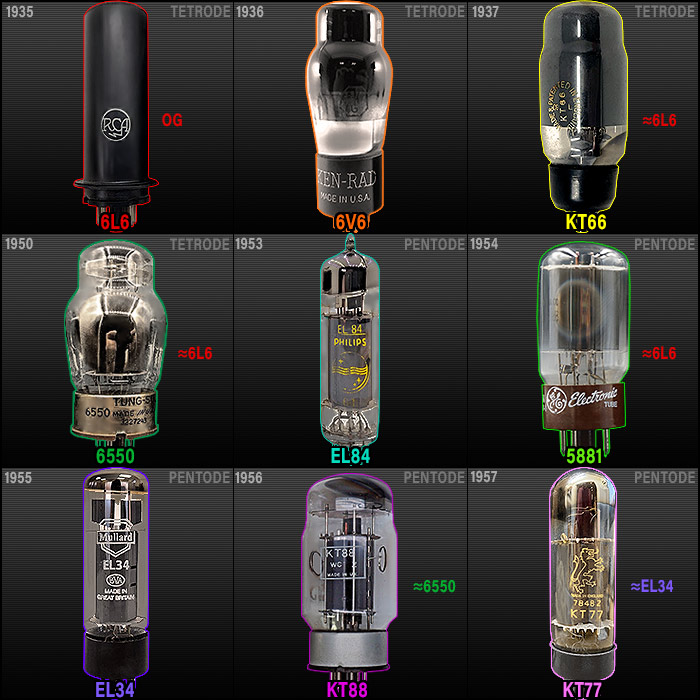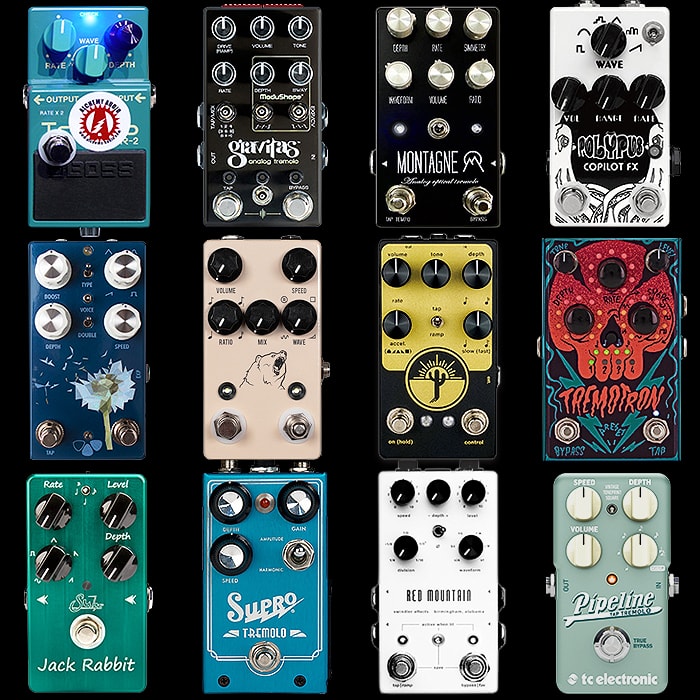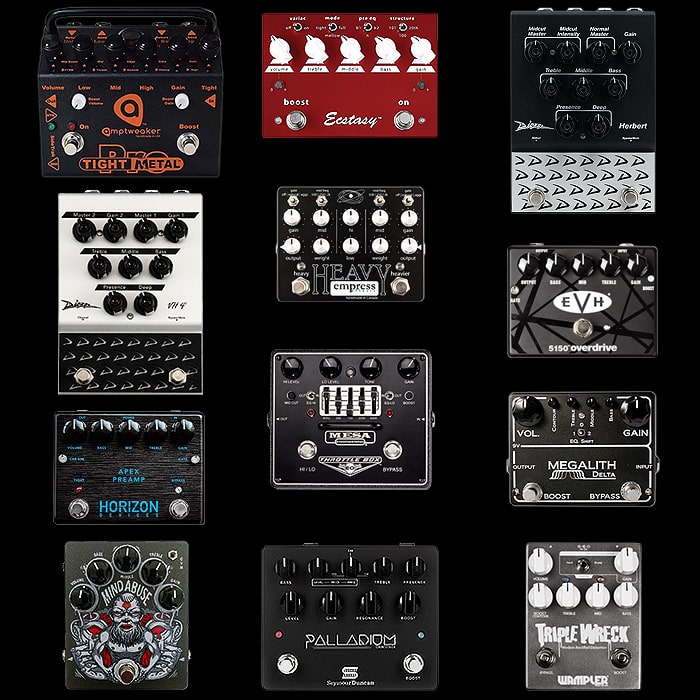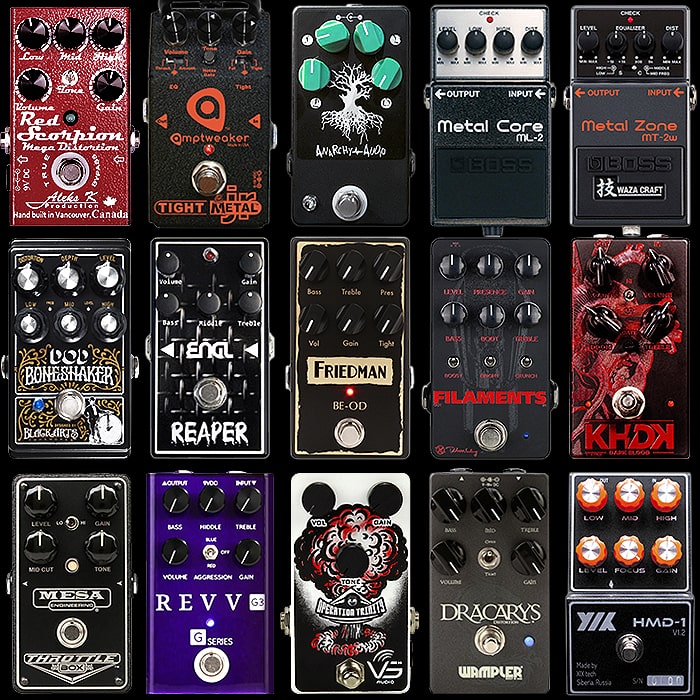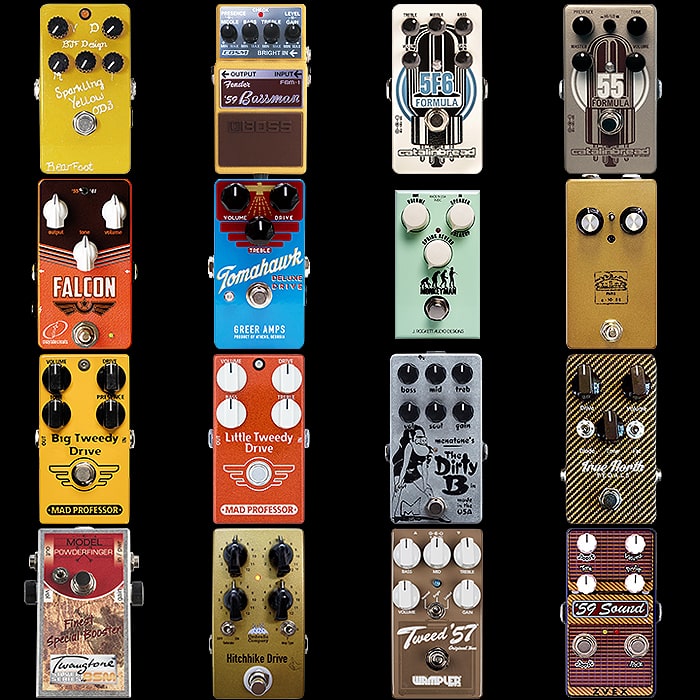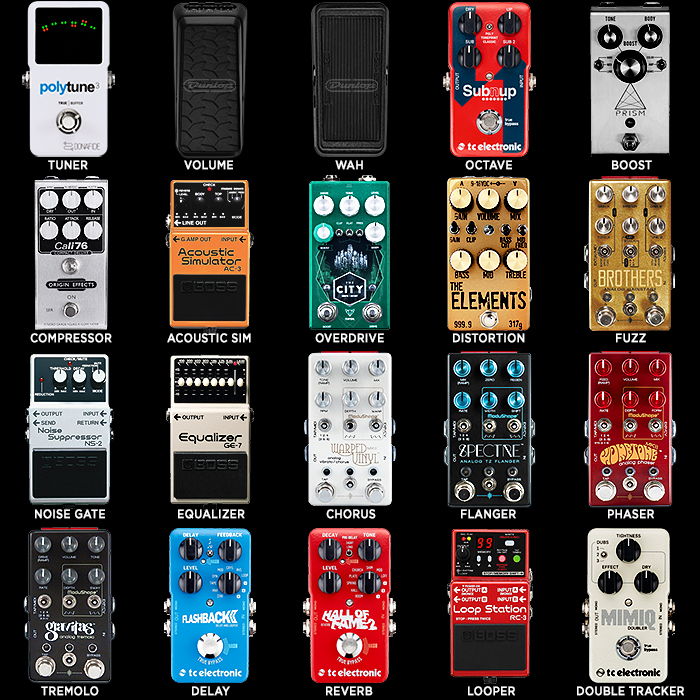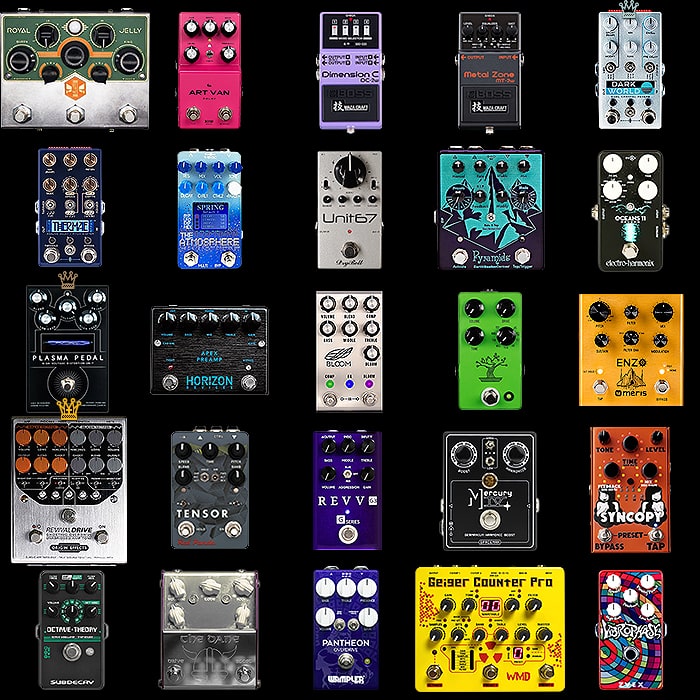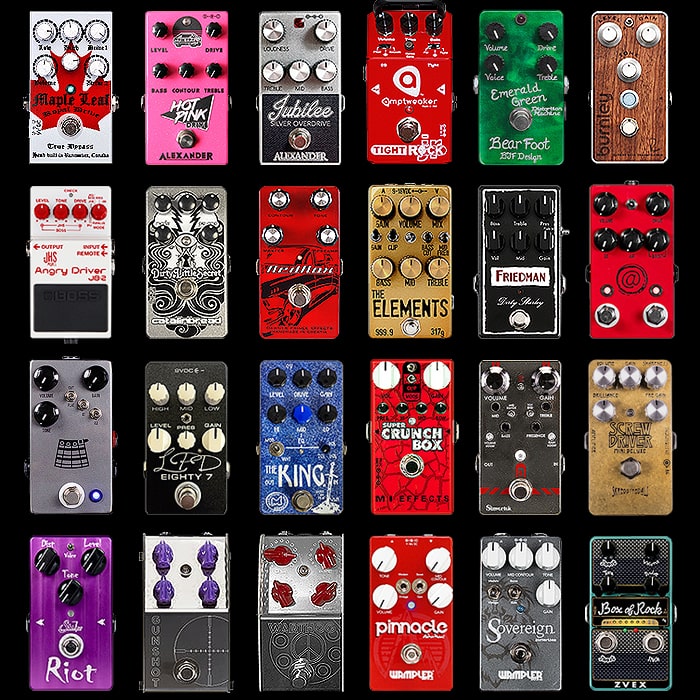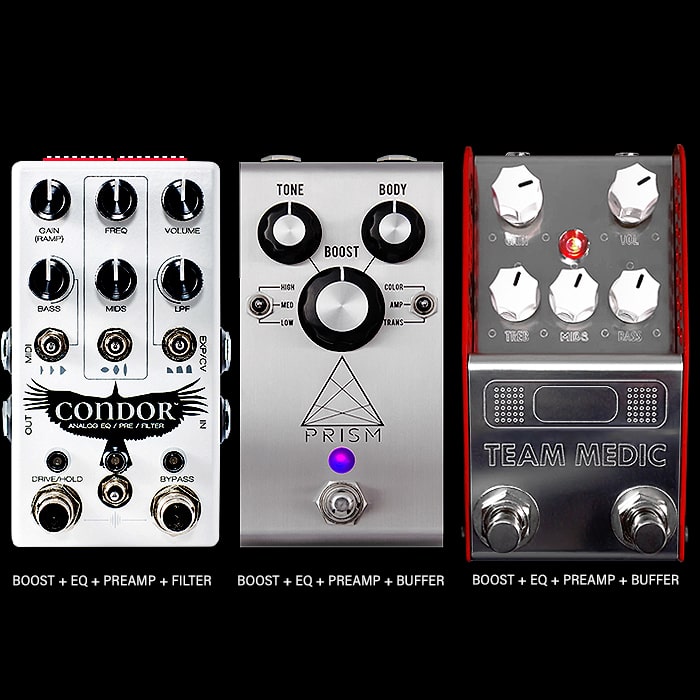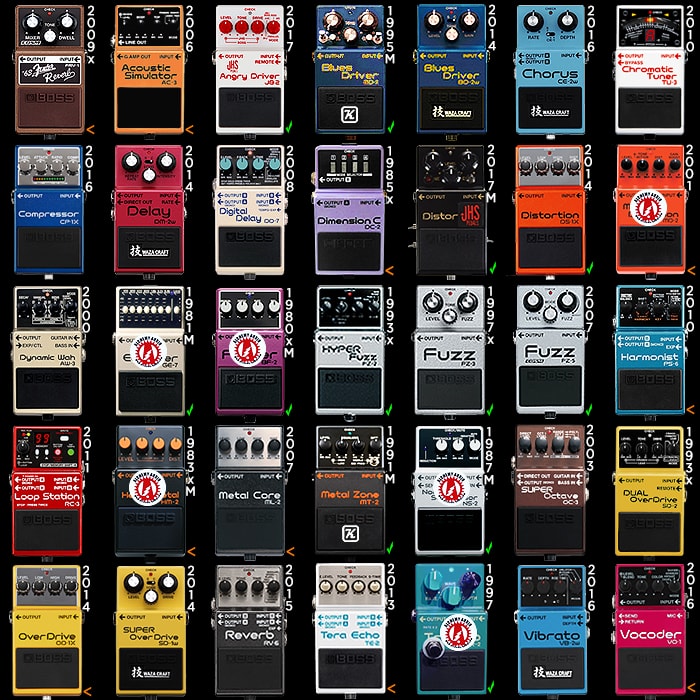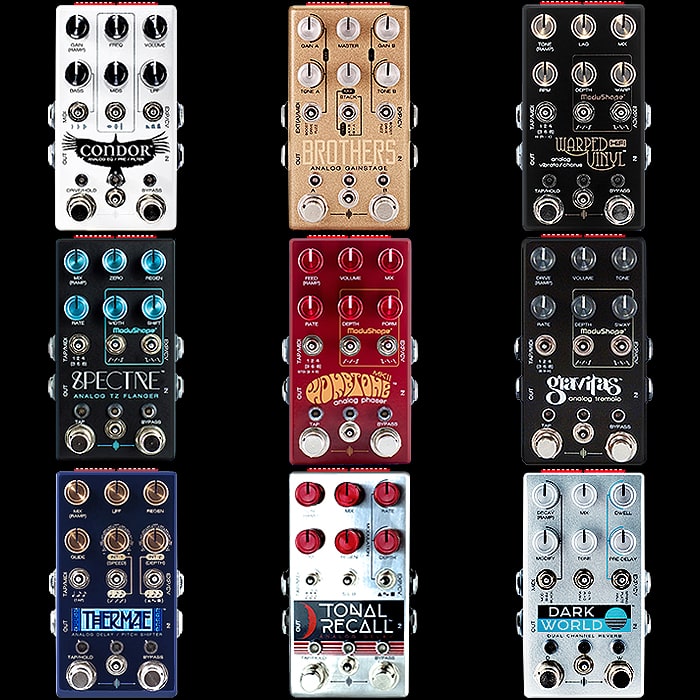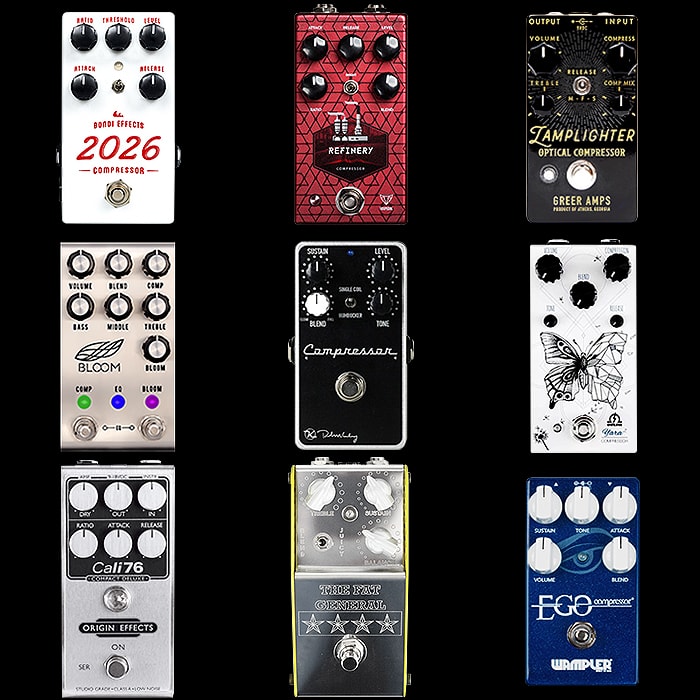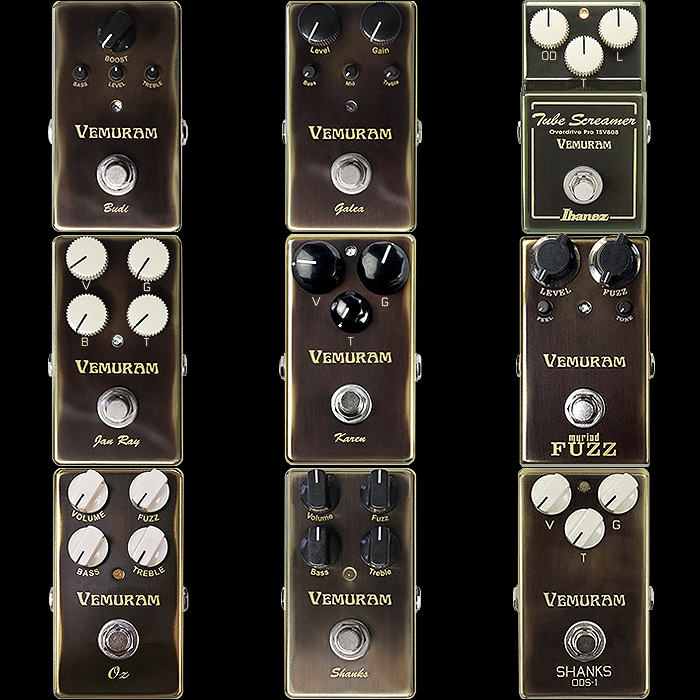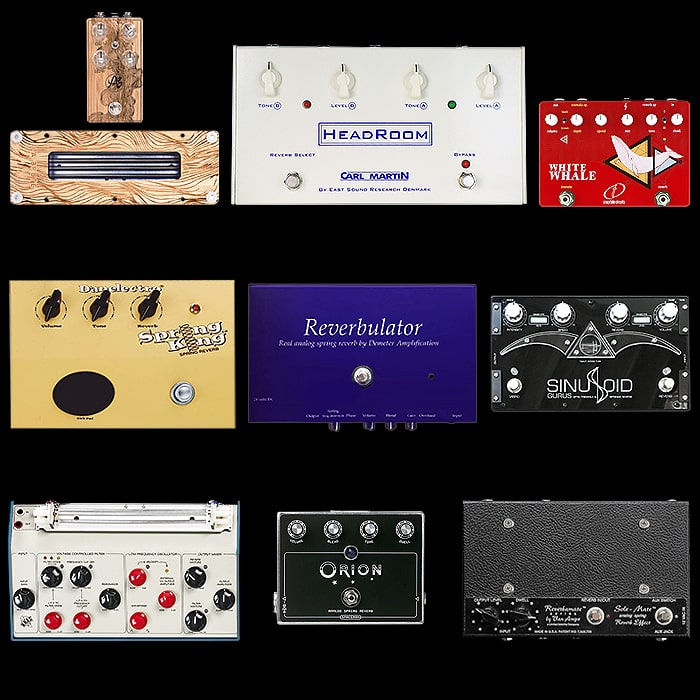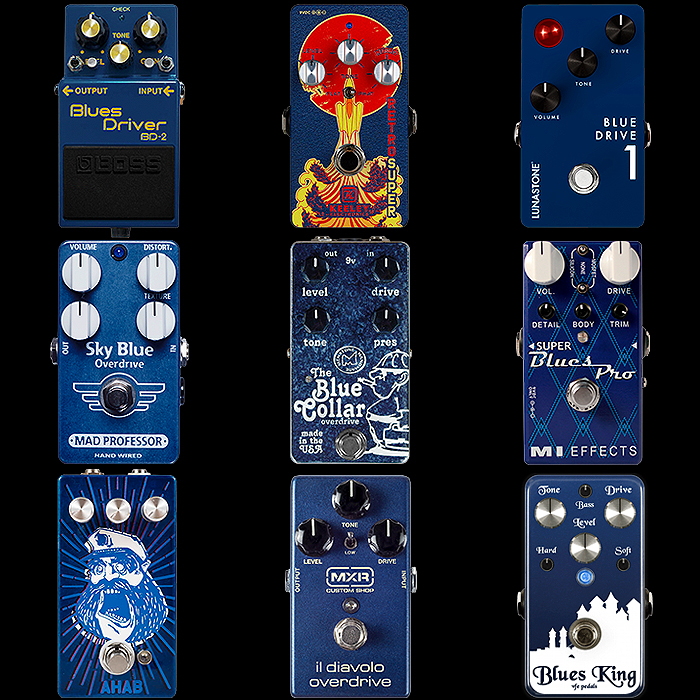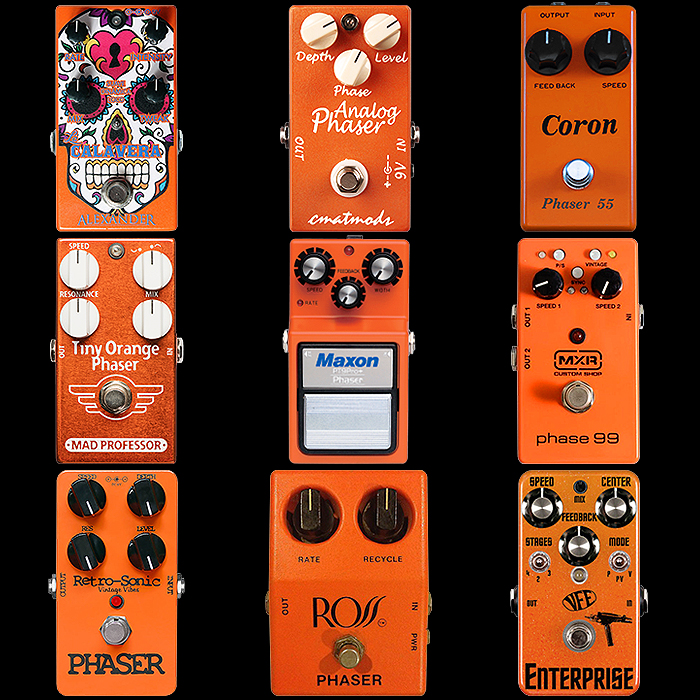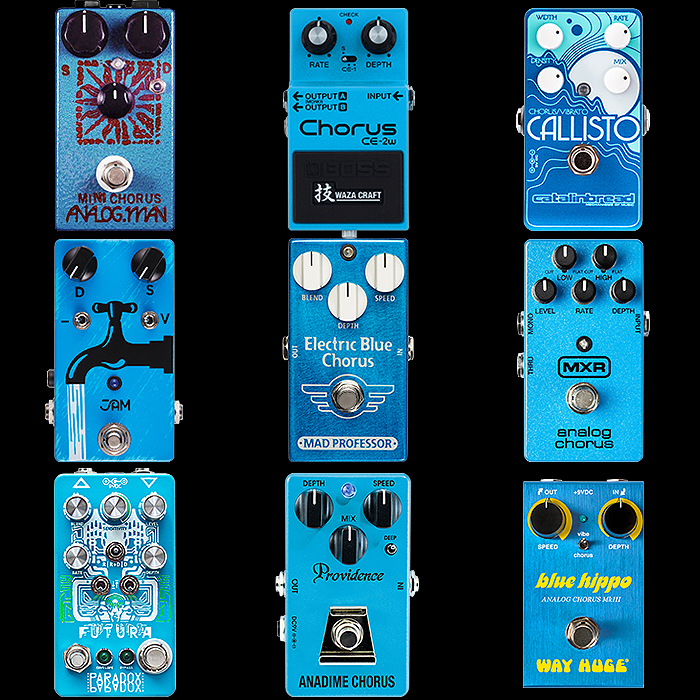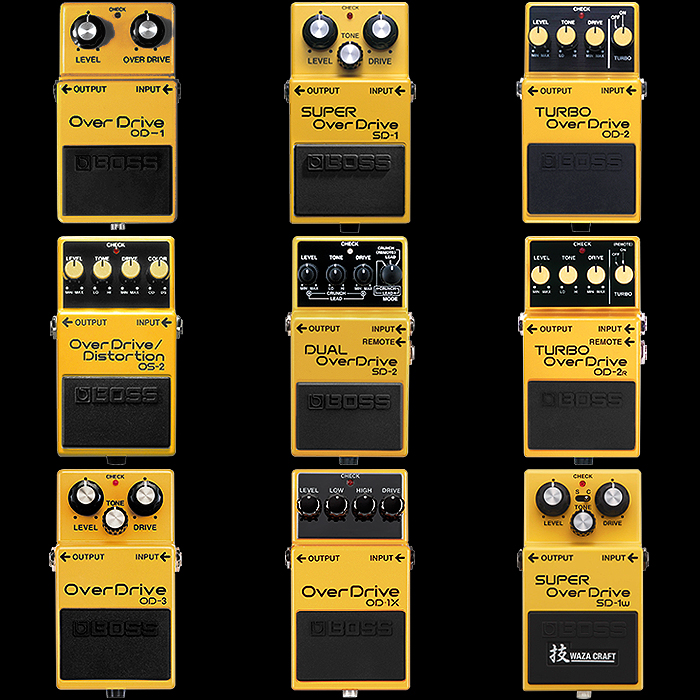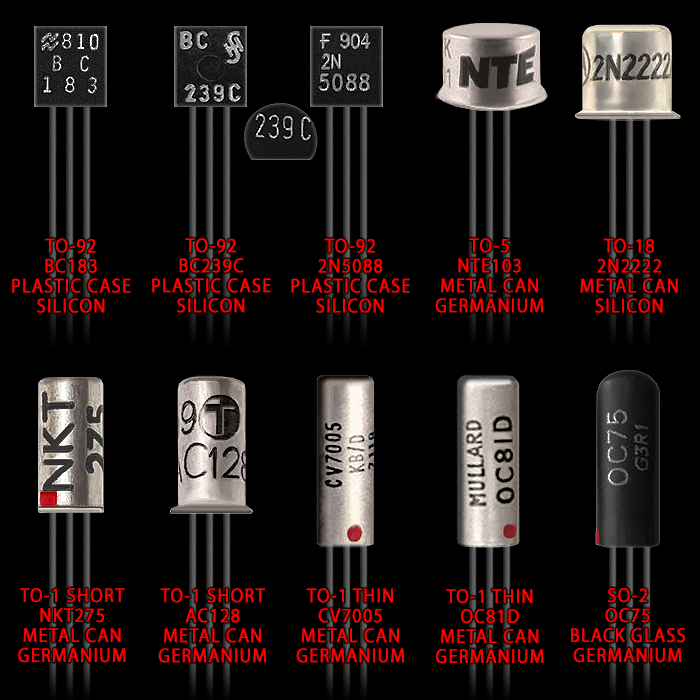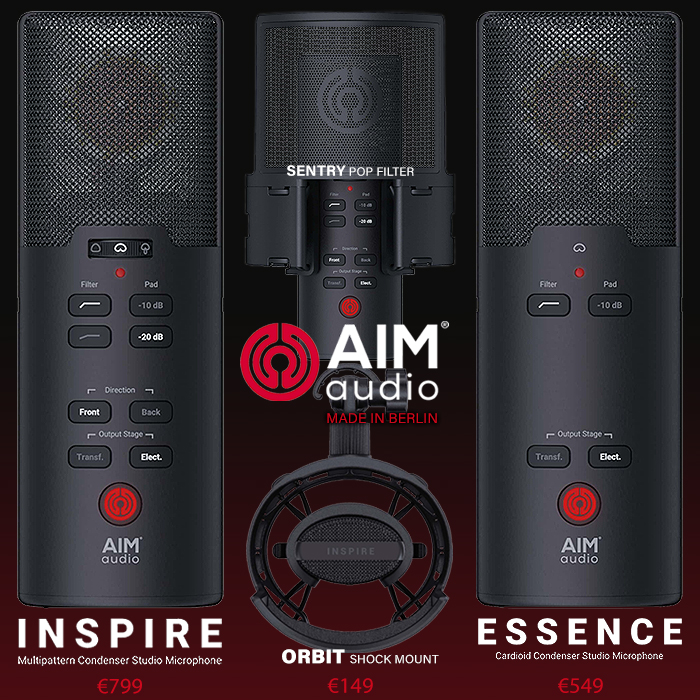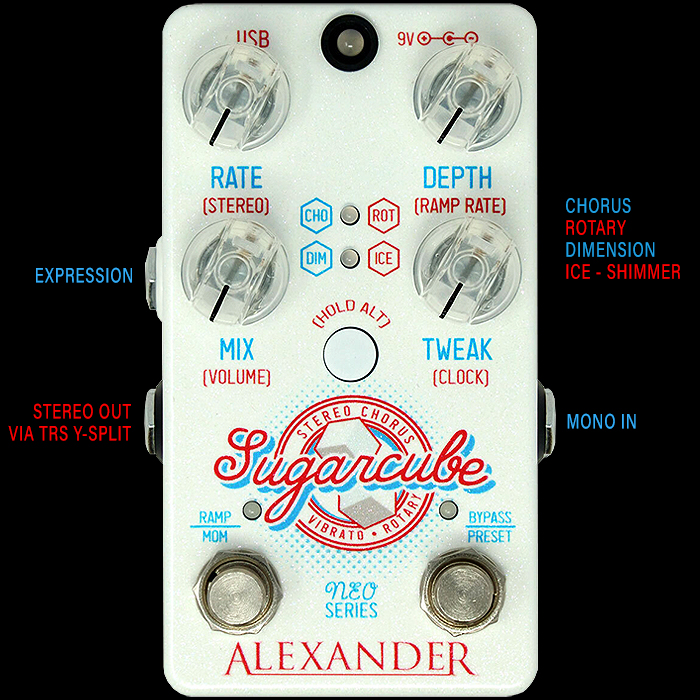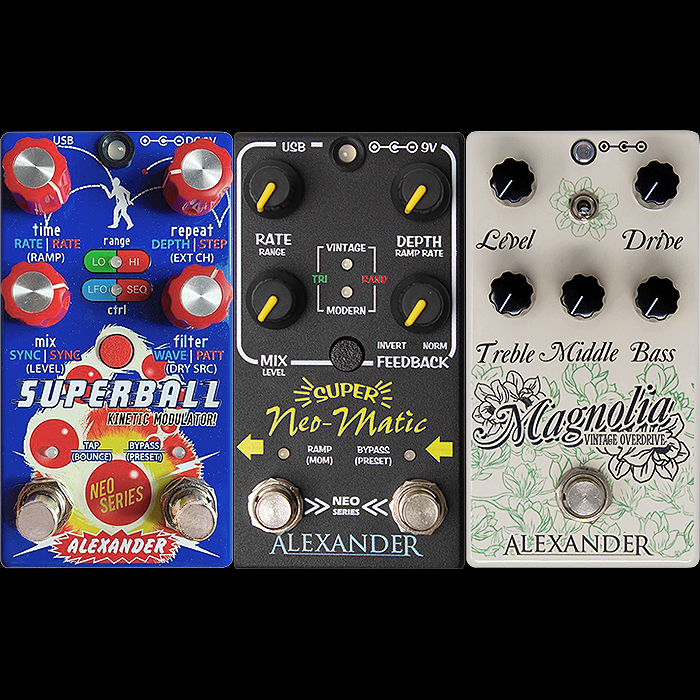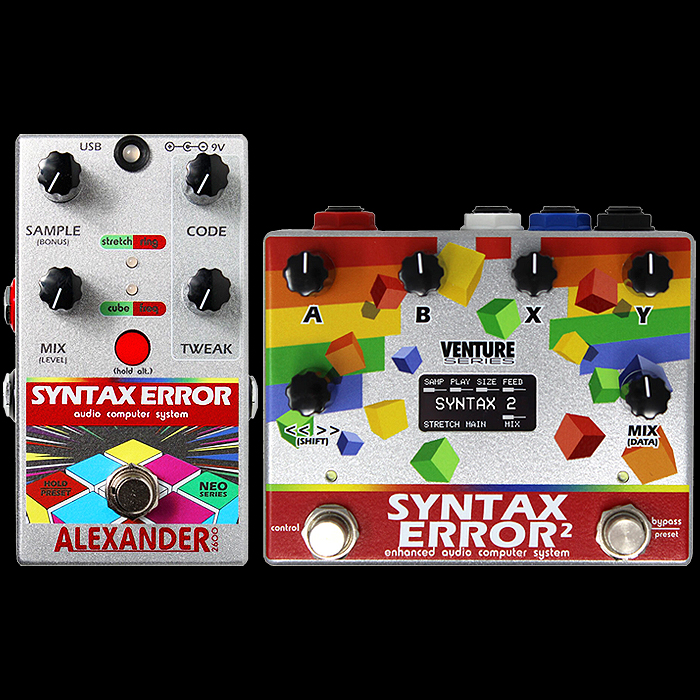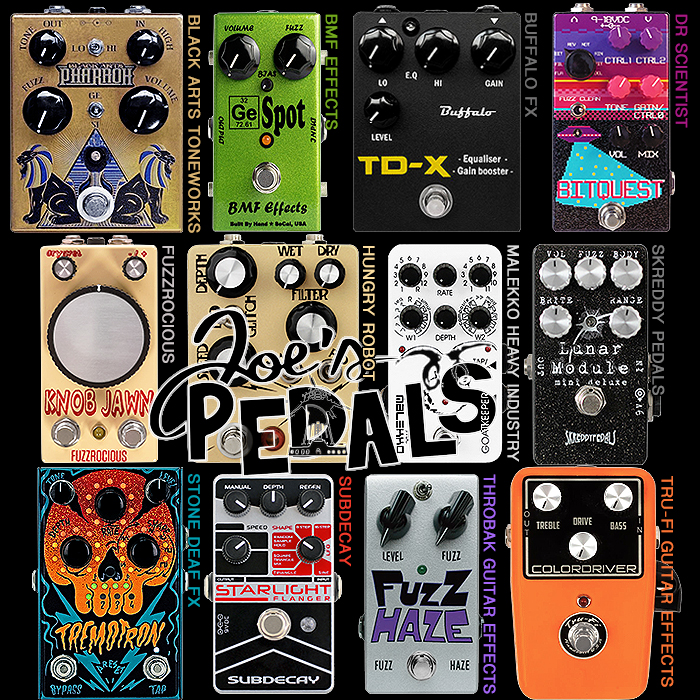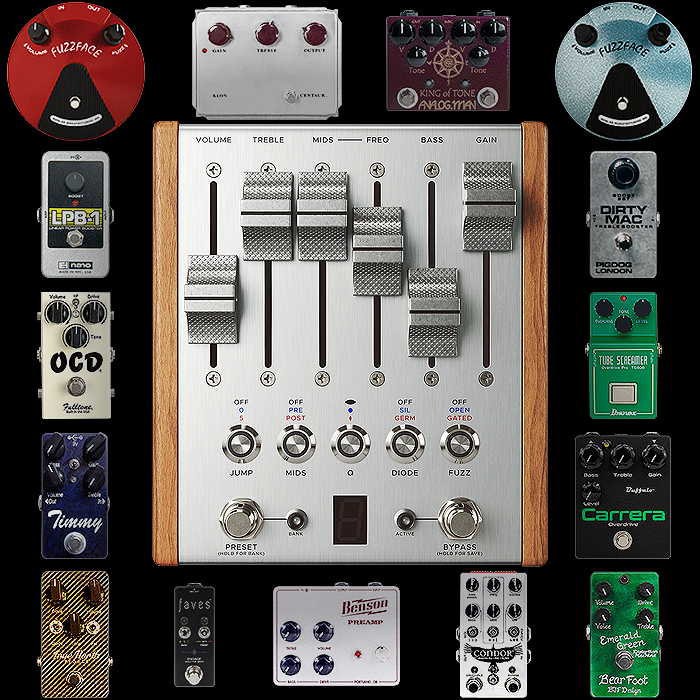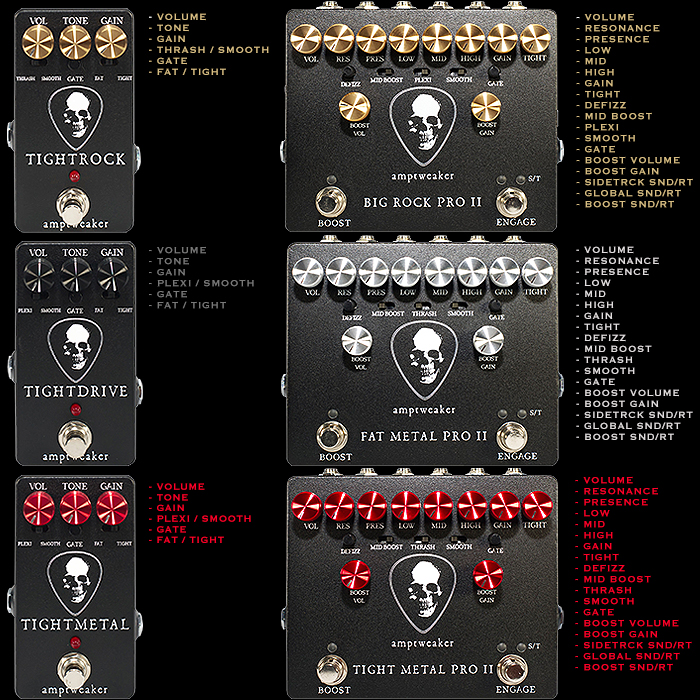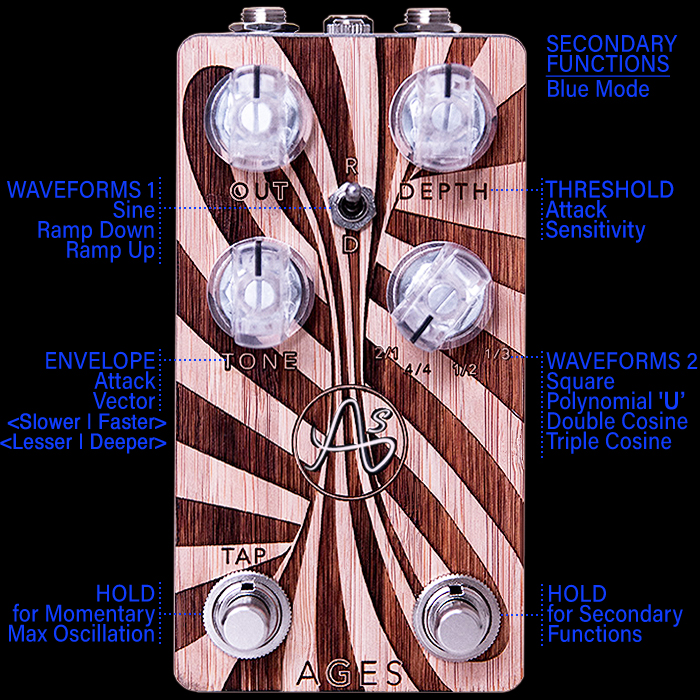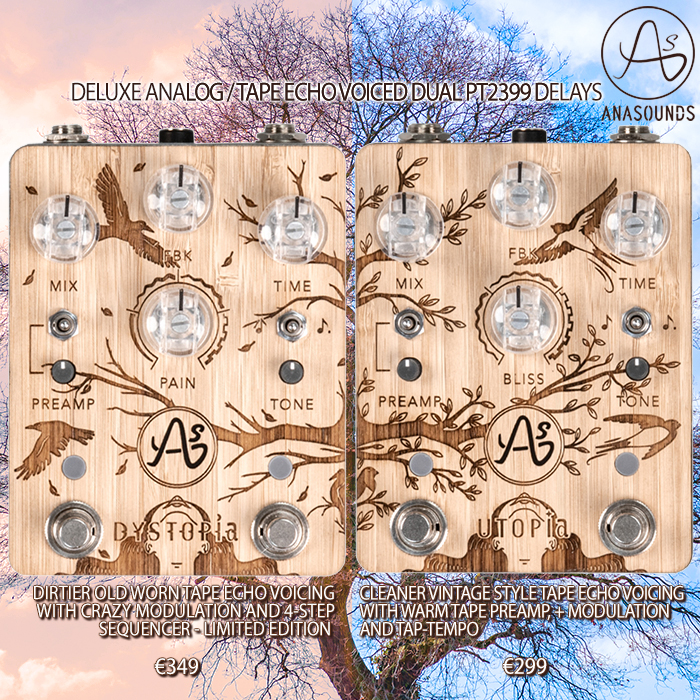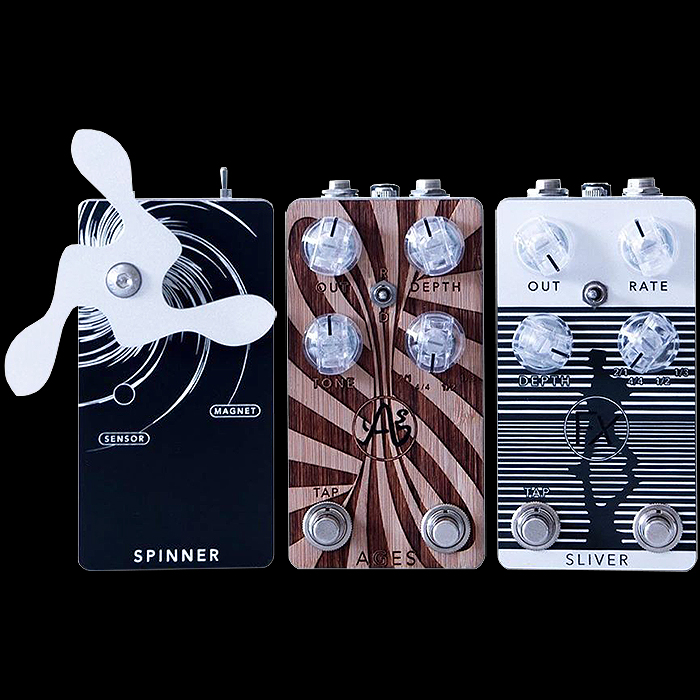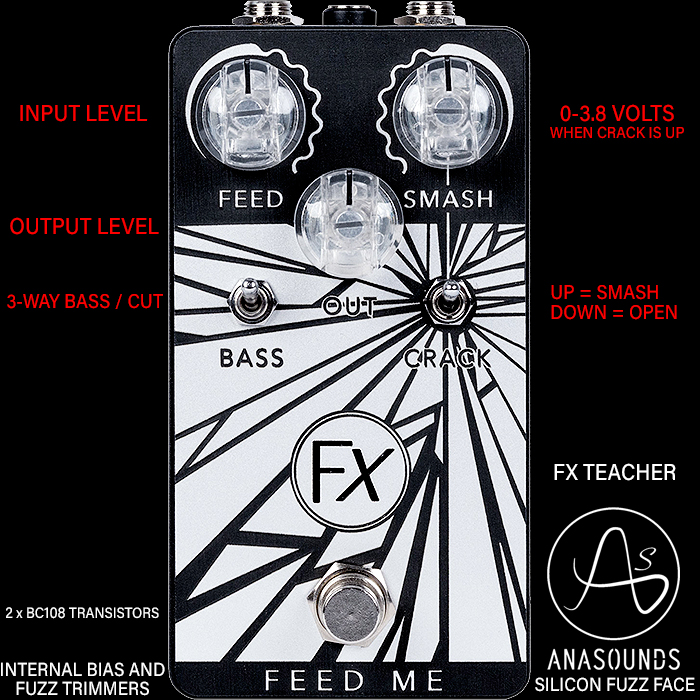9 of the Most Distinctive Pedal Range Enclosure Designs

When I did my various country-based pedal-builder overviews I came across a large number of pedals which looked either too samey or else were somewhat unimpactful aesthetically and/or thematically. A significant part of my day job consists of Brand Stategy / Brand Engineering and Design Consultancy and part of me always wants to improve things and make them better - whether that is wanted or not - so you can heed this advice or ignore as you feel pertinent.
For pedal-makers, the significance of having distinctive pedal designs is that your product is more appealing, but it also builds up positive associations and brand equity which makes consumers/players more likely to want to buy from you again. Good design should never be overlooked or underestimated - most people buy a car or a guitar for instance because they like how it looks. The majority of celebrated lead guitarists picked their weapon of choice because they liked how it looked. Once they had settled on the aesthetics they then put the effort into finding the best sounding/playing one that fit the type.
The experience with pedals is really not too different - the design of the pedal plays a key role in the purchasing decision. I actually think there are sort of 6 factors that inform the process - somewhat along these lines (alphabetical). Each player will have a different set and order of priorities:
- Look (Aesthetics, Colours, Graphics)
- Practicalities (Feature Set, Positional Flexibility, Power Supply, Visual Indicators, Interface, Number of Footswitches)
- Price (Budget?)
- Size (Mini/Compact/Medium/Large)
- Tone (Sound Quality, Clarity. Noise Floor/Signal-t0-Noise Ratio, Volume)
- Versatility (Range and Variety)
For me, my first considerations are usually size, features, range and practicalities then tone and price - an over-sized 24V AC current pedal won’t appeal to me no matter how good is sounds! I have indicated in a few of my trend posts - that I believe pedals are increasingly and generally becoming more compact and more feature-rich - which pretty much suits me exactly - I don’t mind buying an oversized multi-effect workstation pedal for modulations, but I’d rather not buy a single function pedal which takes up the space of 3 or 4 others - so the ’Compact’ enclosure is my preferred size.
The most typical pedals are a variation of the original 1590B MXR Compact enclosure of their first Reference Series from 1973 onwards. Boss’s celebrate latched compact enclosure came 4 years later in 1977. Even though MXR still does maintain a uniformity of look and theme, such is the ubiquity of these types of enclosures that said series cannot be said any more to be trulyly distinctive - I would say the same for the vast majority of commercial / well-known pedal-builders that use the standard shaped enclosures - these include EHX, EQD, JHS, Wampler and even DigiTech and TC Electronic who have their own bespoke enclosure designs, but whose box shape designs are rather subtle- the graphics particular. DigiTech relies very much on graphics to make its pedals stand-out, and thematically there is possibly something of a disconnect. Another maker who does nicely thematic but subtly styled pedals is Skreddy - where the control knobs actually contribute significantly to the quality and the aesthetic of the range.
When I acquired my Beetronics Royal Jelly - which I love by the way, but which nonetheless has room for improvements; I was disappointed by its rather cheap-feeling hollow plastic dials. The rest of the attention to detail of the pedal - inside and out is exemplary, the same is the case with the Boss 500 series pedals where the chassis and footswitches are great, but the plastic dials and buttons lower the tone - particularly compared with their inspiration - the ever-so-classy Strymon Stryfecta!
There are lots of pedal-makers who do beautiful graphics - Catalinbread, Foxpedal, EQD, JAM and Walrus Audio to name a few, but overall you don’t necessarily have all the elements combining here to bring home the advantage of distinction and stand-out. The pedal enclosures I have selected are a mix of classic and modern, and for all of them I don’t need to view the logo or any pedal text to know which brand I’m dealing with - I can just sort of squint and the recognition is instant - this is the essence of pedal stand-out.
I feel that there are sort of 5 characteristics that combine to create standout status for the featured pedals - and those are a mix of the following:
- Control Layout / Interface
- Graphics
- Knobs, Switches and Lights
- Materials Used
- Shape of Box / Enclosure / Appendages
All 9 pedals are near enough ’Compact’ dimensions and I possess examples of most of these. In each case there is a family look to the pedals in the range - and say you take the Chase Bliss Audio Dark World as an example - even with all its dials, switches and dip-switches - once you’ve grown accustomed to one Chase Bliss pedal - you largely understand how they all will work. All these pedals carry through a uniformity of lineage which makes me immediately think of the brand / maker responsible - and brings to mind the other pedals in the range - as it should work.
Pedals/Enclosures listed/pictured in alphabetical order:
Alexander Pedals Neo Series
There are near enough 8 pedals in the recent / newish Neo Series - all of which share multiple modes - typically 6, 4 onboard presets, 4 dials with Alt functions and usually dual footswtiches. I feature the most recent release - the Sky 5000 Delay+Reverb, the second footswitch is typically a tap-tempo. The base chassis here is actually a plain MXR style type, but the combination of multiple LEDs, footswitches and dials - with usually arcade-style graphics - giving this family of pedals significant instant recognition and recall - there's a definite and unique pattern at play here.
Amptweaker
James Brown has evolved a unique pedal enclosure for his pedals - with a protective bar at the rear to help maintain dial settings. The graphic component is rather minimal here, but the layout and placement of dials and switches is both unique and pretty much standard throughout the range - and it is this combination of characteristics that make Amptweaker pedals instantly recognisable.
Anasounds
The underlying enclosures are actually quite standard and plain, but the key differentiators here are a thin wooden panel face-plate alongside a green LED flat lens-style cover - always combined with some really elegant pyrographics. I have some Bubinga face-plate Bogner pedals, but those are limited editions - while for Anasounds the whole range is encapsulated in these elegant stand-out enclosures.
Boss
Boss is sort of the Marmite of the pedal-world - we love it for its many classic effects along the way and bullet-proof robustness, but are kind of annoyed by the limitations of the format. The latch-plate main footswitch design which doubles as a battery cover was genius for its day (1977), while nowadays the restrictions of this aesthetic mean that Boss cannot really hope to compete with say Chase Bliss Audio at this form factor. I could have referenced the JB-2 Angry Driver here with its 3 x dual concentric controls plus mode dial - but Boss cannot be as clever as all these newer upstarts who have far more real-estate to play with and can deploy dual footswitches too. No doubt about it though Boss pedals are pretty much instantly recognisable from any angle.
Chase Bliss Audio
Actually my favourite pedal format to date (a product of Joel Korte's genius) - I love the mix of 16 dip-switches, 6 dials, 4 toggle-switches and dual footswitches with two presets onboard. It's a shame that you can't double/simultaneously step on the two footswitches to switch presets, and I could really do with stereo outputs - otherwise these things are a wonder of pedal engineering. Every pedal in the Chase Bliss range has the exact same interface - although functions will of course vary from model to model.
Origin Effects
The first of 3 British pedal builders to be mentioned here - Simon Keats' outfit have very much a signature style of pedal which has actually a very simple chassis, but relies on well-placed panel graphics with a large multi-faceted amp-style LED lens - and those beautifully milled aluminium control dials. I actually have the larger RevivalDrive with Black and Orange dials - but its lineage and provenance is totally clear and obvious - all the current range matches the same aesthetic - which even though it's really quite simple is nonetheless very elegant and memorable, and funnily enough instantly recognisable as Origin too.
Stone Deaf - Newer Compact Format
Currently there are only two pedals in this new form factor - the fantastic Tremotron Tremolo which I have and love (pictured) and the very recent Syncopy Delay. The actual base chassis is quite standard, and slightly over-sized - what really makes this pedal memorable is the combination of 36 LEDs and bright visually arresting graphics. Both the Tremotron and Syncopy have identical knobs, buttons, LEDs and footswitches layouts and both come with 4 presets onboard. Here it is very much the sum of the parts that makes the difference.
ThorpyFX
Adrian Thorpe's pedals have become somewhat iconic in a relatively short time - and the look of them has much to do with their far-reaching success. These pedals have very unique enclosures only just recently shrunk down to compact enclosure dimensions - the combination of laser-etched and polished steel folded front plate which sits within a sort of latticed winged-cradle makes for a very distinct and robust aesthetic. Greenchild Amplification received a bit of a backlash for its obviously ThorpyFX-inspired recent Mr Boost pedal that now looks like it's going to be discontinued. Imitation is the best form of flattery to a degree, but not when you riff too blatantly from the original originators - who are still working rather hard to make a decent living.
Vemuram
Design-wise these are actually rather unassuming and really rather plain, they do however all come in unique solid Brass enclosures - which no one else does. Even though the pedals can be different shapes and the knobs vary in type and colour - variously black, cream or white - there is one unifying thematic element here that reigns supreme - the very distinctive rounded corner brass ingot style casing which exudes quality, but still doesn't quite justify for me the £400 ticket price!
Final Thoughts
In terms of proper Product Design here - there are various additional factors that come into consideration - things like robustness, longevity and ease of maintenance and upkeep, and practicalities such as learnability and ease of use. I am an avowed pedal-tweaker - so the more dials the better - and the fact that I gravitate towards more complex pedals is roughly in line with this selection.
I am very happy with the pedals featured above - I feel each of these is properly distinct and standout as well as instantly associated with a very specific brand and larger family / range of pedals. The concern with wood is that it marks easier and is more fragile than metal, or one of the more modern plastic / resin face-plates like for instance Spaceman Effect uses. I had actually considered including Spaceman Effects here, but there is not sufficient design consistency within the range - even though all the pedals come in standard black editions - some of those have an outline-type of a design framework, while other have no outlines within the face-plate design at all and look quite differentiated.
Lots of makers use face-plates - like Spaceman and Greer Amps for instance, and my most recent Matthews Effects Ghoul Fuzz - has a perspex face-plate with the graphics screen-printed on its reverse side - this makes the graphics safe from harm once affixed on top of the enclosure/chassis.
I feel contemporary pedal makers have lots of different options available to them to make their pedals stand out and be more appealing - I will freely admit that one of the things that first attracted me to Sheldon Ens' True North Tweed Drive pedal was the suitably tweed-covered enclosure and colour-matched knobs, now with better / more balanced placement of the Diode and Fat switches in the latest version. The look of the pedal is what attracted me to it - I then investigated further and found it sounded just as good, if not better than it looked. And such is the case for many pedals - you buy them to a degree because you like the look of them, or at least the aesthetics don't offend your sensibilities.
I have known players that would not buy a pedal - say the DigiTech Ventura Vibe - because they found the main graphic too garish - I guess that's why so many pedal-builders - like Keeley - do limited runs in different colourways to appeal to those picky players and the ones for instance who want every pedal on their board to be black.
If I were a pedal-maker I would look to establishing my own 'house-style' I would not initially go all the way with a unique chassis / enclosure design, but find ways to make a standard Hammond 1590B box unique and distinct - through using distinctive colourways, graphics and knobs unique to me. I would probably adopt the Spaceman / Greer Amps face-plate method - probably screen-printed initially, then engraved/etched or some similar variant - I can see from Sheldon that the tolex-covered route is very painstaking and finicky - quite a lot of hard work really. Once I had established myself as a known entity and achieved some degree of success - then Phase 2 or 3 would be to originate a more unique chassis that was particular to my line of pedals.
You actually don't need to go quite that far - I think EarthQuaker Devices and Walrus Audio do an excellent job of pretty uniform and eye-catching graphics - actually so does JAM pedals of Greece - which has a very bright 70's kind of daisy age aesthetic. The simple outline graphic is somewhat over-used nowadays and there are lots of unintentional JHS-style clones which use similar graphic treatments. JHS's use of colours and uniform use of dials and layouts does though create a thematic family feel - which gives the range a real feel of quality - there are elements to those pedals though which are becoming ubiquitous, but for now I feel JHS is holding its own against all its copyists and also-rans.
At the most basic level you can break your design down to colour of enclosure and font - if done right that can be enough to give yourself an 'identity'. For it to be stand-out and unique and distinct though - you usually need to throw a few more elements into the mix. To a large degree here Boss has been able to hold onto its own ubiquity because pretty much everyone else has moved on from that style of enclosure - it just has too many limitations to be able to accommodate all those extra dials, LEDs and switches that are so popular nowadays.
Never forget that there is always room for improvement - but too much tweaking will kill your brand cachet too. You need to find a strong direction to pursue and stick with it for a while ...

